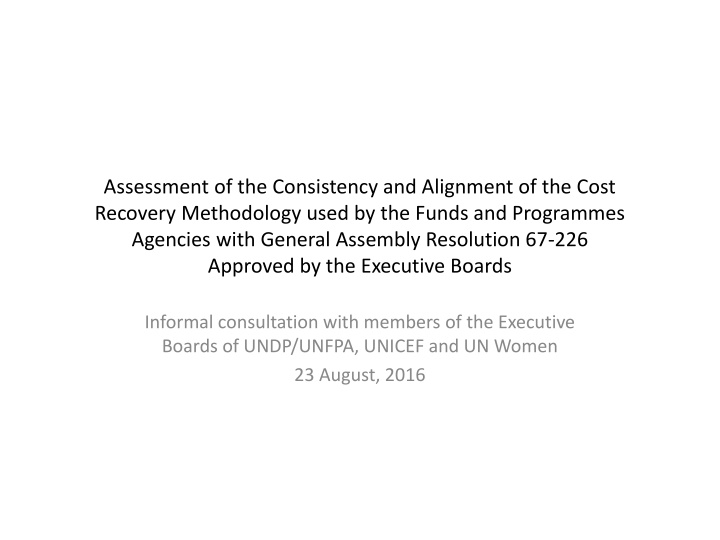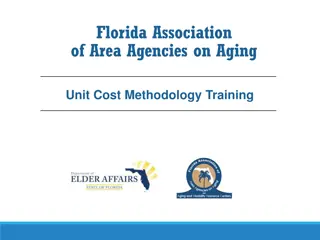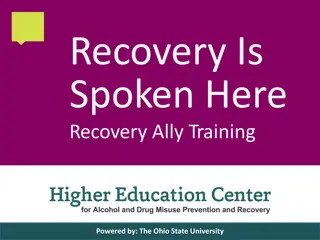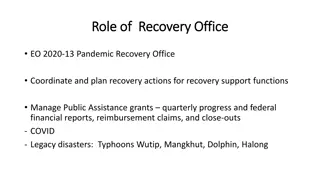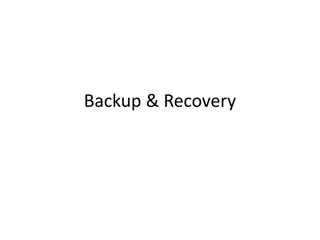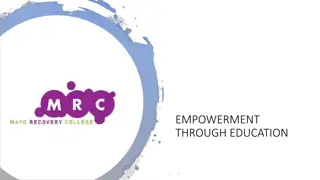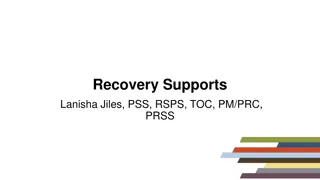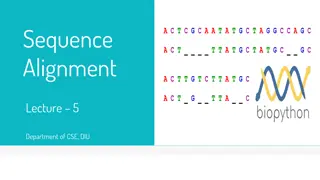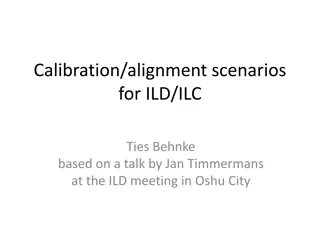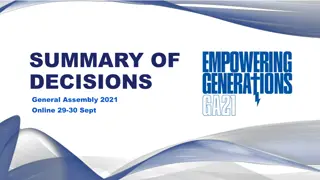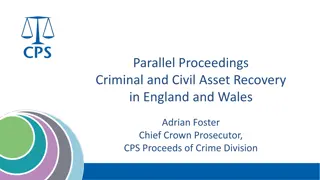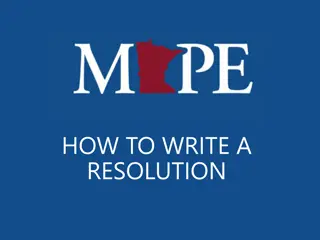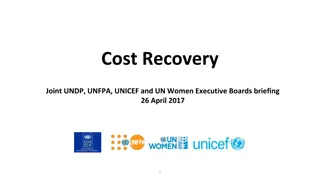Assessment of Cost Recovery Methodology Alignment with General Assembly Resolution 67-226
This report assesses the consistency and alignment of the cost recovery methodology used by UNDP/UNFPA, UNICEF, and UN Women with General Assembly Resolution 67-226. Issues such as declining core funding, the need to avoid cross-subsidization, and the importance of full cost recovery are highlighted. Recommendations are provided to improve cost recovery practices, emphasizing the principles of transparency and harmonization for sustainability. Challenges facing agencies in terms of rates and achieving overall cost recovery are also discussed.
Download Presentation

Please find below an Image/Link to download the presentation.
The content on the website is provided AS IS for your information and personal use only. It may not be sold, licensed, or shared on other websites without obtaining consent from the author.If you encounter any issues during the download, it is possible that the publisher has removed the file from their server.
You are allowed to download the files provided on this website for personal or commercial use, subject to the condition that they are used lawfully. All files are the property of their respective owners.
The content on the website is provided AS IS for your information and personal use only. It may not be sold, licensed, or shared on other websites without obtaining consent from the author.
E N D
Presentation Transcript
Assessment of the Consistency and Alignment of the Cost Recovery Methodology used by the Funds and Programmes Agencies with General Assembly Resolution 67-226 Approved by the Executive Boards Informal consultation with members of the Executive Boards of UNDP/UNFPA, UNICEF and UN Women 23 August, 2016
Structure of Report Background Assessment of alignment and consistency Review of Rates Challenges facing agencies Recommendations for improving cost recovery
Background Declining core a major issue Need to avoid cross-subsidization to preserve critical role of core in both programme and administration Core as % of total income, 2013 and 2015 UNDP UNFPA UNICEF UN Women 2013 17% 52% 22% 52% 2015 14% 47% 20% 44%
Background, continued All costs must be recovered to ensure sustainability Business models differ but harmonized approach to cost recovery has advantages: Transparency Reduced transaction costs Eliminates rate competition among agencies Promotes UN system coherence
Assessment of Methodology General Assembly Resolution 67-226, section II: Reaffirmed that full cost recovery is the guiding principle governing the financing of non- programme costs; Stressed that core resources remain the bedrock of operational activities for development of the United Nations System; and Called for a simple, transparent and harmonized methodology for cost recovery.
Assessment, continued A simple, harmonized system requires that activities unique to individual agencies be excluded: Agency specific functions and activities The role of core as bedrock strongly implies that some basic agency functions continue to be excluded from cost recovery: - Critical, cross-cutting functions - Development Effectiveness
Review of Cost Recovery Rates EB approved rate is 8%; has been applied with exceptions for: Thematic funds Programme country cost sharing Existing agreements until renewed Waivers to be approved by agency heads Therefore, under the current rate structure it is not possible to achieve an overall cost recovery rate of 8%
Rates, continued Effective cost recovery rates, 2013-2015 based on agency expenditures UNDP UNFPA UNICEF UN Women 2013 5.9% 6.7% 5.5% 6.8% 2014 6.1% 7.0% 6.3% 6.5% 2015 6.3% 7.0% 6.5% 6.7%
Practices of other Multilateral Agencies World Bank: Volume discounts for larger contributions to Recipient Executed Trust Funds World Food Programme: 10% cost recovery rate for private sector contributions UNOPS: Start-up and risk built in as direct costs in all programmes
Challenges Faced by Agencies Steadily declining core funding affects both programme and administrative operations Some donors unwilling to include all direct costs in programmes; others unwilling or unable to pay the standard cost recovery rates Longer-term institutional agreements locked into lower cost recovery rates
Recommendations Agencies and funding partners should work together to: reverse the decline in core funding; ensure that all direct costs are included in programmes; each agency should enhance instruments to provide transparency and help assure donors of fair treatment minimize waivers and review longer-term agreements with the goal of applying the standard rate wherever possible
Recommendations, continued Agencies should develop policies for providing volume discounts for large contributions and perhaps premium rates for those small contributions with high management costs Security risk should be factored into programme funding, either as direct costs or as a standard rate add-on.
Recommendations, continued Agencies should review arrangements for pooled funding within the UN system to determine if their costs are being fully recovered When appropriate, agencies should propose review of approved reduced rates
Summation --The methodology is aligned and consistent with General Assembly Resolution 67-226 -- Agencies should review the above recommendations in the context of (1) preparing new strategies and budgets to take effect in 2018, and (2) actual and anticipated flows of development resources to their programmes
